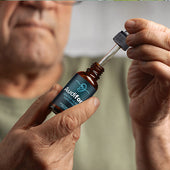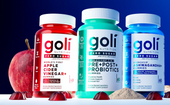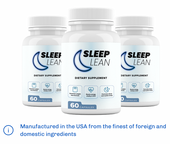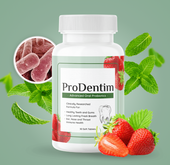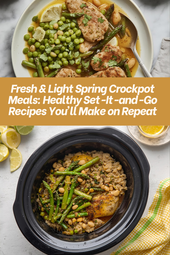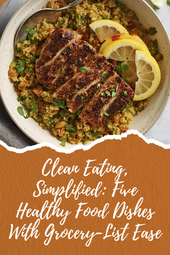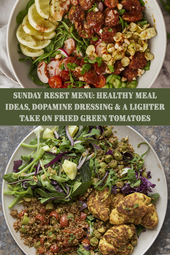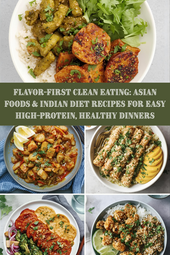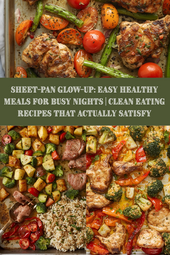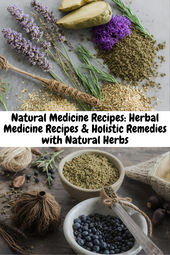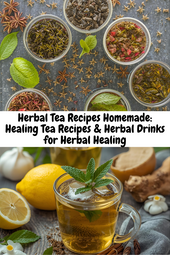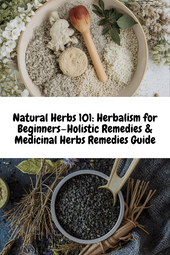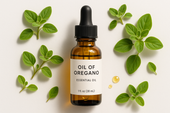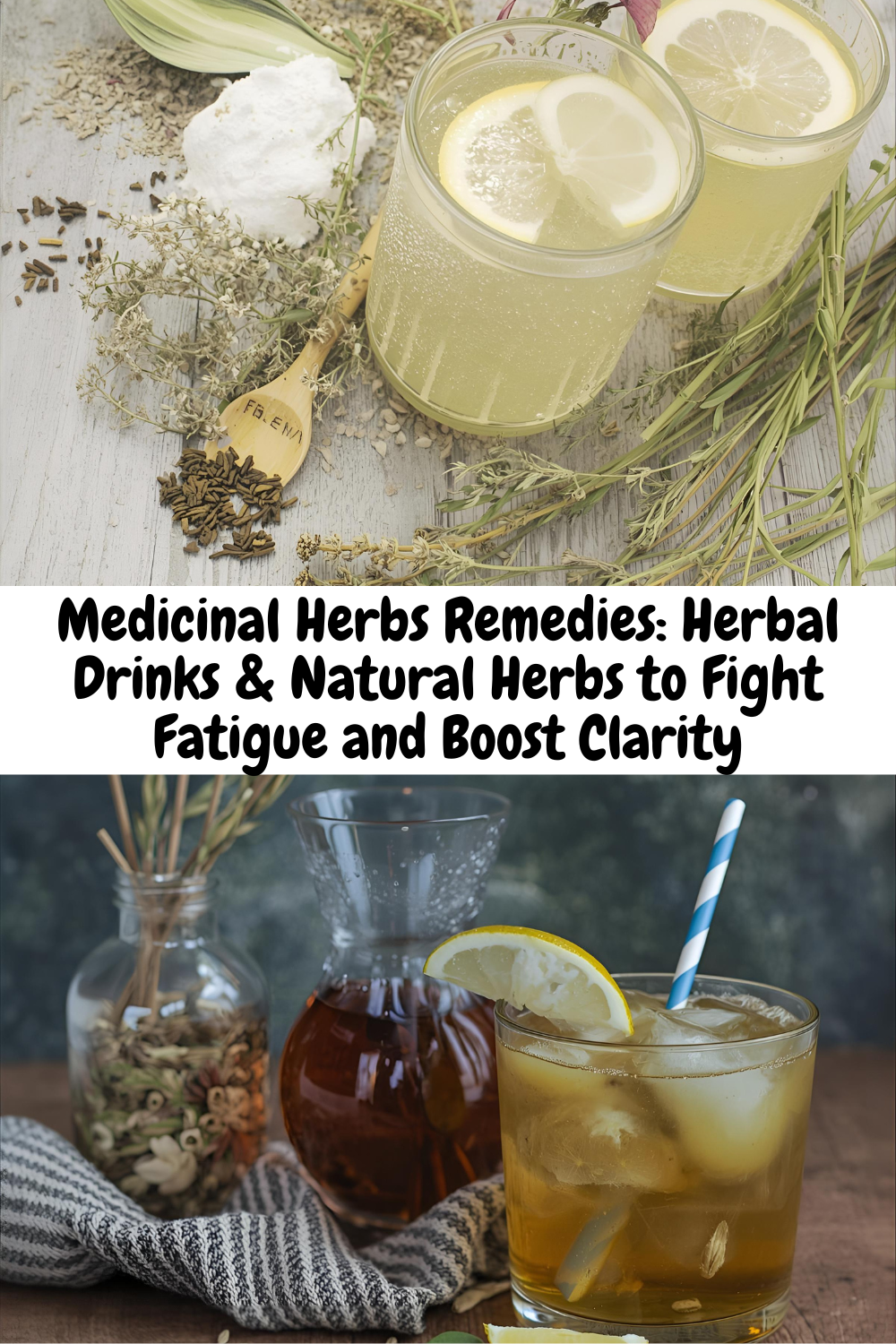
Medicinal Herbs Remedies: Herbal Drinks and Natural Herbs to Fight Fatigue and Boost Clarity
Share
How to build steady, caffeine-free energy with kitchen-friendly blends
Disclaimer: Educational content only. Not medical advice. Consult your healthcare provider before using herbs, especially if you are pregnant, nursing, managing a medical condition, taking medications, or preparing remedies for children. Do not give honey to children under one year old.
Why fatigue and brain fog show up even when you “do everything right”
Many people clean up their diet, try to sleep more, and still wake up low on energy. The gap often lives in the small moments that shape the day: hydration first thing in the morning, mineral intake, blood sugar steadiness, and the nervous system’s response to daily stress. Herbal drinks made with natural herbs can support each of these without overstimulation. Instead of pushing the body with a big caffeine spike, the blends in this guide aim for two outcomes: gentle lift and long glide. You will use whole plants, slow steeps, and bright aromatics so the result feels nourishing, not jangly.

What makes herbal drinks effective for clarity and stamina
A good herbal drink does three things at once. It hydrates, which immediately improves alertness. It delivers minerals or phytonutrients that cells use to make energy. And it brings aroma and flavor that cue the brain into a focused state. Ginger and citrus wake the palate and support digestion. Peppermint and rosemary nudge attention in a crisp, refreshing way. Mineral-rich infusions such as nettle and oatstraw whisper energy without caffeine. Tonic berries like schisandra add tart complexity that many people experience as a cleaner kind of alertness. None of these are quick fixes; they are repeatable practices that gently move your baseline.
How to choose herbs confidently and keep them fresh
Choose reputable sources for dried herbs and look for vibrant color and fragrance. Dried leaves should be crisp, flowers should be aromatic, and roots should smell alive rather than dusty. Store them in airtight jars away from heat and light and write the date on the label so you know what to use first. If you work with fresh ginger, lemons, or oranges, wash them well and slice just before brewing. Use clean utensils and jars for every step so your flavors stay bright and your steeps keep well in the fridge.

Hydration and minerals as an energy strategy
The body’s energy production depends on fluid balance and electrolytes as much as it does on calories. After a night of sleep, even mild dehydration can feel like fatigue or a headache. A morning cup that includes water, a squeeze of citrus, a hint of sea salt, and ginger gives you hydration, flavor, and a little warmth for digestion. Later in the day, long-steeped mineral infusions supply a gentle stream of calcium, magnesium, and trace minerals from leaves like nettle and oatstraw. People often describe these infusions as a sense of steadiness rather than a buzz. That steadiness is what carries you through an afternoon without the crash.
Aromatics for focus without jitters
Aromatics interact with attention in a way coffee drinkers will recognize, but without the shakiness. Peppermint has a cooling edge that clears the palate and the head. Rosemary’s resinous character gives a grounded backbone to a cup that might otherwise taste too airy. The pair works beautifully as a warm tea in winter and as a brisk iced cooler in summer. A small lemon slice amplifies the aroma and offers a light bitter note that tightens focus further. Because these are leaves rather than strong stimulants, you can drink them in the afternoon without sabotaging sleep.

Tonic berries for bright, tart lift
Schisandra berries are tart, complex, and beloved in many traditions as a tonic that supports clear thinking and endurance. When simmered briefly and chilled, they become a ruby concentrate you can dilute with still or sparkling water. The flavor is unique, like a cross of tart berry and citrus peel with a hint of spice. If you have never used schisandra, start with a small amount and notice how you feel. Some people find it focusing; others prefer milder blends. If you take medications or have specific conditions, check with a clinician because tonic herbs can interact with certain therapies.
Make it a rhythm, not a project
Energy does not arrive from a single hero cup. It accumulates from repeated signals that your body learns to trust. Pick one morning drink, one mid-day blend, and one evening reset and repeat them for a week. A citrus-ginger morning brew can become a pleasant ritual that tells your nervous system “we are awake now.” A bottle of mineral infusion in the fridge can replace a mid-afternoon soda. A peppermint rosemary cooler can mark the transition into deep work. Consistency is what lifts your baseline; variety keeps your palate interested so you stick with it.

Taste and texture tips that improve every recipe
If a drink tastes flat, it probably needs acidity or salt. A small squeeze of lemon or a couple of drops of raw apple cider vinegar can wake up a sleepy cup. A pinch of sea salt in a quart of citrus-ginger tea adds the lightest electrolyte effect and makes flavors pop. If a drink is too sharp, a teaspoon of honey or maple smooths the edges without turning it into dessert. Steeping time is your main lever. Leaves and flowers do well with water just off the boil and seven to fifteen minutes of steeping, while roots and berries prefer a brief simmer or longer contact with hot water. For iced versions, brew a little stronger and pour over plenty of ice to keep the flavor bright rather than washed out.
Safety, sweetness, and personalization
Natural herbs are powerful in their quiet way. Start low, especially with strong aromatics or tonics, and listen to how your body responds over several days. If you are sensitive to acidity, dilute oxymel-style blends or choose milder options. If you limit sugars, keep sweeteners light or skip them entirely. If you manage blood pressure, avoid or limit licorice root, which is not included in these recipes. As always, check for interactions with your medications. Your experience is the compass. The recipes below are maps.

How to use these recipes in a real day
Use the citrus-ginger energizing tea as your morning starter. Keep the nettle and oatstraw infusion steeping while you work and strain it at lunch so a chilled bottle waits for you in the afternoon. Pour the peppermint rosemary clarity cooler over ice to begin a deep-work session with a crisp sensory cue. Save the schisandra sparkling tonic for a pre-meeting lift or a late-afternoon reset when you want clarity without a caffeine echo at bedtime. With repetition, these drinks become easy choices that support how you want to feel, which is the whole point of medicinal herbs remedies.
Citrus–Ginger Energizing Tea
Hydrating, bright, and gently warming—designed to lift morning energy without caffeine.
Yield: 2 cups | Prep: 5 min | Simmer: 8–10 min | Total: ~15 min
Ingredients
- 1–2 Tbsp fresh ginger, thinly sliced
- 2 cups water
- 2–3 thin lemon slices (or 2 tsp fresh lemon juice)
- 1 thin strip orange peel (optional, for aroma)
- Pinch fine sea salt (about 1/16 tsp)
- Honey or maple to taste (optional)
Directions
- Simmer sliced ginger in water for 8–10 minutes.
- Remove from heat; add lemon slices and orange peel; cover 2–3 minutes.
- Strain into mugs; add a tiny pinch of sea salt and sweeten only if desired.
Storage: Refrigerate up to 24 hours; excellent served iced.
Note: The small salt pinch enhances hydration and flavor without making the cup salty.
Nettle & Oatstraw Mineral Infusion
Deeply nourishing long steep for gentle, steady energy without caffeine.
Yield: 1 quart | Prep: 5 min | Steep: 4–8 hrs or overnight | Total: hands-off
Ingredients
- 3/4 cup dried nettle leaf
- 1/4 cup dried oatstraw
- 1 quart water, just off the boil
- Lemon slice or splash of apple juice (optional, for serving)
Directions
- Place nettle and oatstraw in a clean quart jar.
- Fill with hot water; cap and steep 4–8 hours or overnight.
- Strain thoroughly; chill and sip through the afternoon.
Storage: Refrigerate and enjoy within 36 hours for best flavor.
Note: Add a lemon slice or a small splash of apple juice if you prefer a brighter taste.
Peppermint & Rosemary Clarity Cooler
A crisp aromatic tea to sharpen focus—refreshing hot or iced.
Yield: 2 cups | Prep: 5 min | Steep: 7–10 min | Total: ~12–15 min
Ingredients
- 1 Tbsp peppermint leaf
- 1/2 tsp rosemary, lightly crushed
- 2 cups water, just off the boil
- Lemon slice to serve (optional)
- Ice for serving (optional)
Directions
- Combine peppermint and rosemary in a teapot; cover with hot water.
- Steep 7–10 minutes; taste at 7 minutes and adjust.
- Strain; serve warm with lemon or pour over ice for a cooler.
Storage: Refrigerate up to 24 hours; best flavor same day.
Note: Brew a touch stronger if you plan to serve over ice.
Schisandra Sparkling Tonic
Ruby-tart tonic concentrate topped with still or sparkling water for a clean, clear lift.
Yield: ~2 cups concentrate (dilutes to 4–6 servings) | Prep: 5 min | Simmer: 15 min | Total: ~25 min + chill
Ingredients
- 1/2 cup dried schisandra berries, rinsed
- 3 cups water
- 1 thin strip lemon or orange peel (optional)
- Honey or maple to taste (optional, light)
- Chilled still or sparkling water for serving
Directions
- Simmer schisandra berries with water for 15 minutes; add citrus peel in the last 2 minutes.
- Cool to room temperature; strain and sweeten lightly if desired.
- Chill the concentrate; serve 1/3 cup concentrate topped with 1/2–2/3 cup cold water or sparkling water.
Storage: Refrigerate concentrate up to 4 days.
Caution: Schisandra is a tonic herb; if you take medications or are pregnant, consult a clinician before use.





